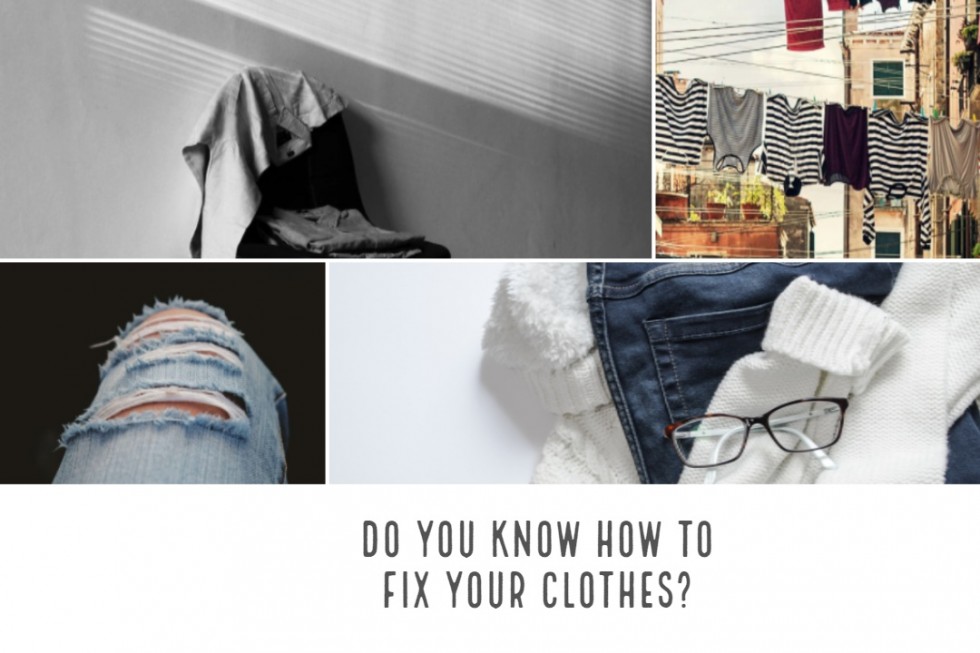Everyone has the moments when their favorite shirt or pants get ripped. Men most frequently forget about such clothes as if they didn’t exist; women sometimes can patch a hole, but postpone this procedure until the last minute. Why does this happen? Probably, because most people worldwide don’t know how to patch a hole in the best possible way. We decided to right a wrong and talk about four basic stitches that can patch a hole of any size. Have a look at them below:
Running stitch
This is the most basic and easiest hand stitch out of all existing. A lot of videos say that this is the best stitch to connect two pieces of fabric, however, in the real life people usually use running stitch just to shorten too long pants or sleeves. This stitch is almost invisible if the stitching color is matched to the fabric color. Moreover, you can apply running stitch to:
- sew on new patches (this is a perfect fix for garden clothes that you really like and don’t want to waste, but which are full of holes)
- repair hems at the end of pant legs, skirts, jackets, and any other item of clothing (it’s invisible and does offer a perfect solution in urgent situations)
- re-attach a piece of fabric back to the main piece (for instance, for a split hem that attaches a sleeve to the main clothing).
For more delicate fabrics and “visible” parts of your clothing, it’s better to use a single thread stitching. If you need to patch a hole firmer, then a double thread will work just fine.
Back stitch
The back stitch is similar to the running stitch but is a little more complicated in the process. To make a back stitch you need to make two steps forward and one step back along the stitch line. The back stitch is a perfect way to patch a hole in a high wear and tear area because it’s very strong and flexible. Here are the most common cases when a back stitch will save you:
- repair a zipper that came off the clothing item;
- repair the undone seam;
- repair places and heavy tears where the fabric is unraveling or starting to.
As back stitch is a sturdier variation of a running stitch, it can also come in handy for all the cases described above. Be ready, however, that you’ll need more time to patch a hole with back stitch, than with running stitch (especially if you’re not a pro-sewer).
Whip stitch
Even though it’s a common belief that whip stitch is more complicated than the previous option, it’s still easy to learn. The best way to explain what you need to do is by showing you a video. Here’s what whip stitches are for:
- fixing busted seams on shirts, pants, and jackets as well as pillows, blankets (and anything else that has some stuffing inside);
- split open pockets;
- hems that are split open at the bottom.
Most often, however, the whip stitch is used for fixing home decor elements and for the creation of hand-made toys, personal pillows, etc. If you need to actually fix some clothing item, then make sure to choose a matching thread color to avoid any visible fixes. In case you’re making a hand-made gift for a friend, go for a completely different thread color to add your gift some authenticity.
Slip stitch
The slip stitch is another great way to patch a hole; it’s similar in technique to the whip stitch, but it won’t be visible on the clothing item. Yet, be ready that slip stitch is harder to master (this means that if you need a quick fix and have never ever sewed in your life, then go with the stitches above). Professionals use slip stitches to patch a hole in a visible area of a product where the whip stitch thread would be too visible. Another peculiarity of slip stitches is that they are not strong; this means that it’s not advised to use slip stitches for big holes. And, of course, ensure that the chosen thread perfectly matches your fabric color.
The bottom line
There is nothing extremely tough and complicating in patching a hole, yet this is some ability that you need to master. The stitches described above will help you deal with an emergency on the spot regardless of your previous sewing experience. If, however, you have a beloved shirt or your favorite pants that got ripped off heavily, don’t experiment with patching these items yourself. Visit a professional tailor who will guarantee perfect patching and will also be able to save even the worst torn clothing items. In case you have no idea about tailors, press the button below to find an expert in your area.





